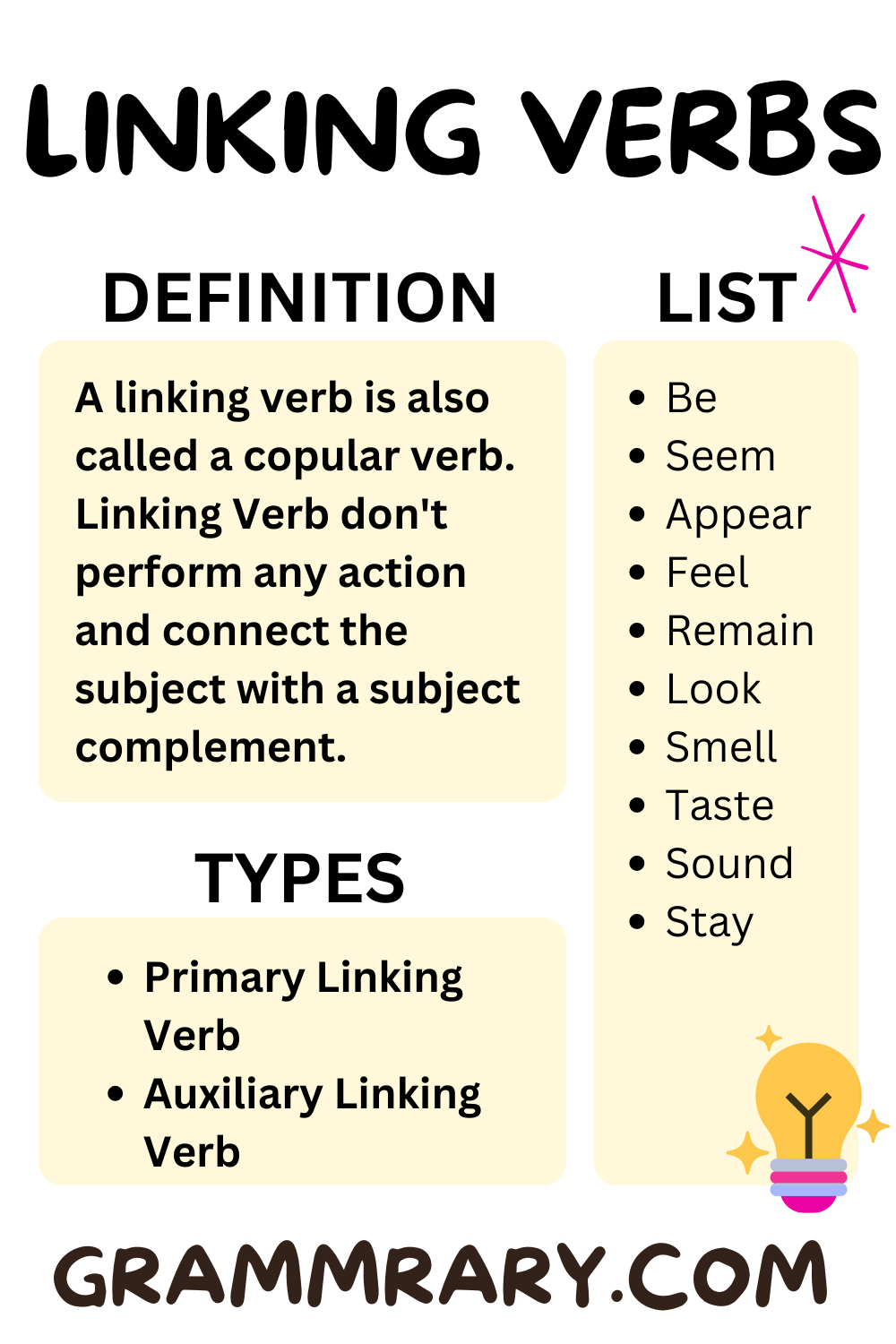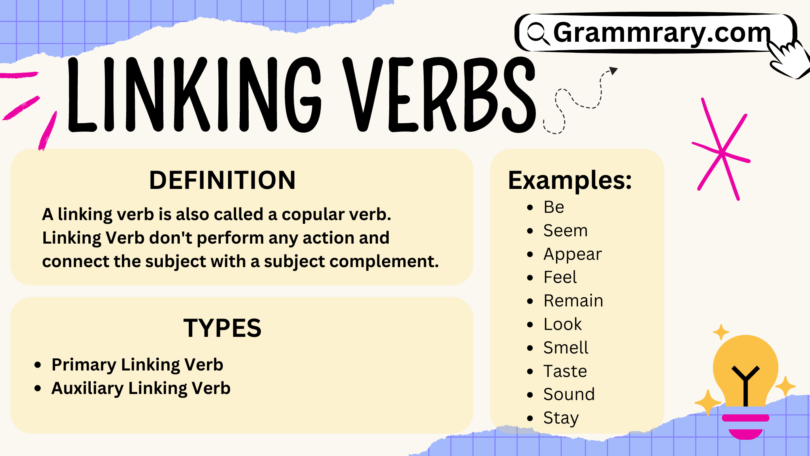We’ve studied verbs, the state of doing an action, and action verbs represents actions done by an individual or an object. But are there any types of verbs that do not perform a particular action but link the subject with the subject complement? These are linking verbs.
Linking Verbs Definition:
A linking verb is also called a copular verb. Linking Verb don’t perform any action and connect the subject with a subject complement.
For example:
- Evans is nervous.
Here, “is” is the linking verb, it connects the subject “Evans” with the adjective “nervous”.
Linking Verbs Examples:
- Be
- Seem
- Appear
- Become
- Feel
- Remain
- Look
- Smell
- Taste
- Sound
- Stay
- Turn
- Grow
- Prove
Example Sentences:
- My sister is a skilled girl.
- We became very scared after the wobble.
- She seems suspicious.
- This food tastes terrible.
Usage of Linking Verb in a sentence:
Use linking verb in a way that complies with subject-verb agreement. A linking verb always comes before a subject complement. Subject complement defines the subject, providing more information. The subject complement is of two types.
Predicate nominatives:
It is the type of subject complement that describes the subject using a noun phrase or a noun.
Predicate adjectives:
The type of subject complement that describes the subject using an adjectival phrase or adjective.
The Two Types of Linking Verbs:
These can be classified into two main types. These are:
- Primary Linking Verb
- Auxiliary Linking Verb
Primary Linking Verb:
It represent condition or state. For Example:
- Be
- Become
- Seem
- Appear
- Remain
- Feel
- Look
- Smell
- Sound
- Taste
- Stay
- Grow
- Turn
- Prove
Auxiliary Linking Verb:
It is also called a helping linking verb. It represents the state of being from the past, present, or future. For Example:
- Have
- Had
- Has
- Do
- Did
- Does
- Will
- Would
A to Z List of linking verbs PDF
- Appear
- Be
- Become
- Did
- Do
- Does
- Feel
- Grow
- Had
- Has
- Have
- Look
- Prove
- Remain
- Seem
- Smell
- Sound
- Stay
- Taste
- Turn
- Will
- Would

Linking Verbs List
Rules to use Linking Verbs in a sentence:
- Linking verb can also serve as intransitive verb. Intransitive verbs don’t represent direct objects. If the verbs represent the direct object, it is not the linking verb.
- The Linking verb is an irregular verb when it comes to pluralization.
- Linking verb are very rarely used as continuous verb tenses.
- Linking verb don’t represent action. This differentiates them from action verbs. You can refer to linking verb, as stative verbs. But not all the stative verbs are linking verb.
- Linking verb must comply with subject-verb agreement.
- Use singular linking verb for Singular subject.
- Use plural linking verb for Plural subject.
- Be careful while using adverb with linking verb. Adverbs may change the context of a sentence.

Linking Verb Definition, Examples, Usage, List, and Worksheet
Linking Verb PDF:
Here is a linking verb worksheet. Solve to excel.







